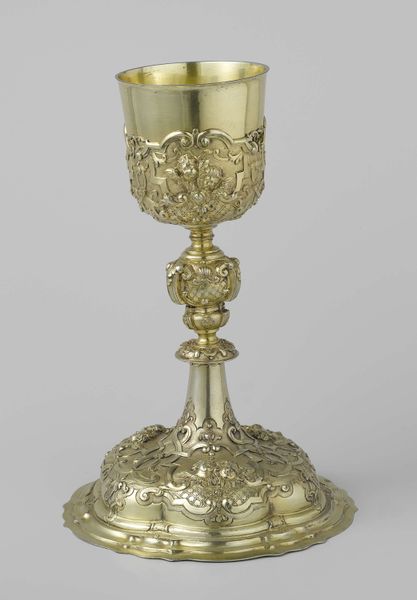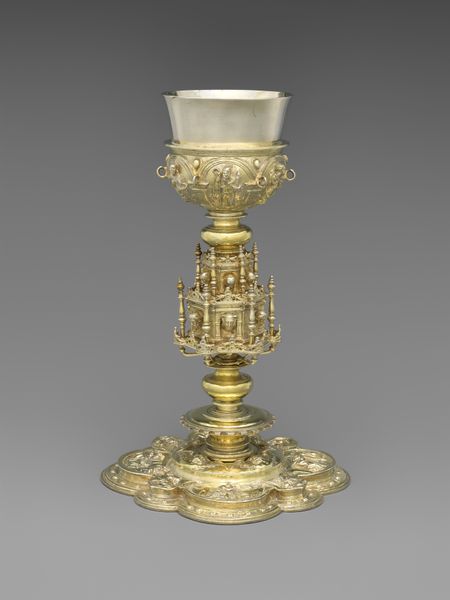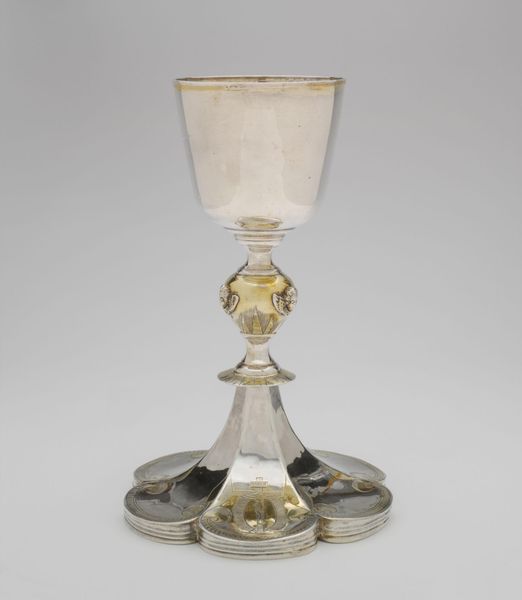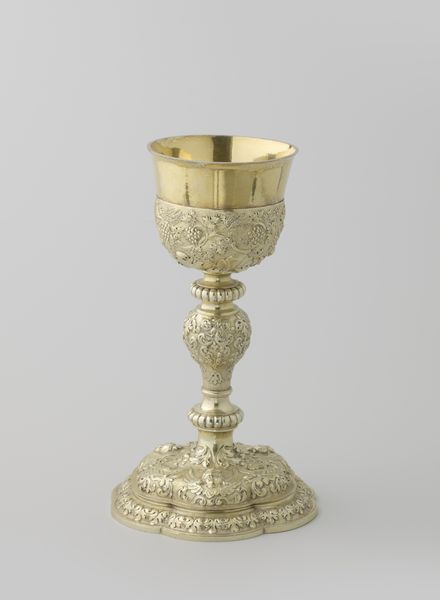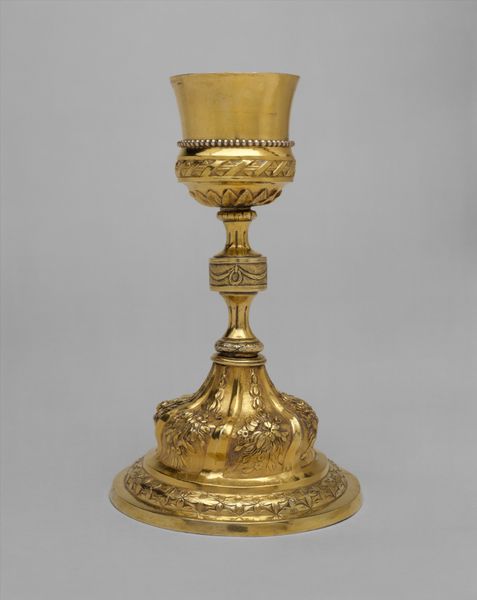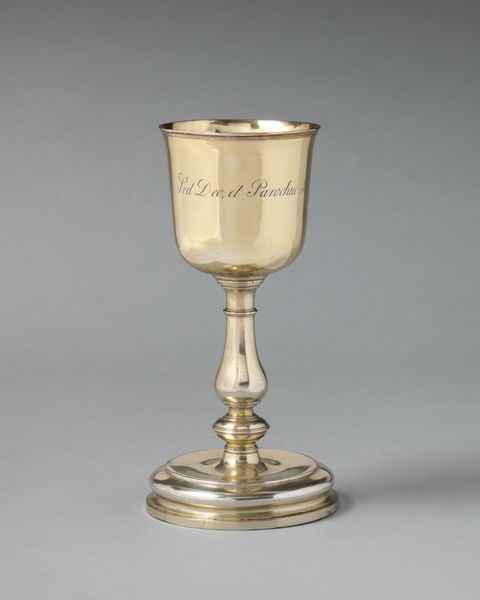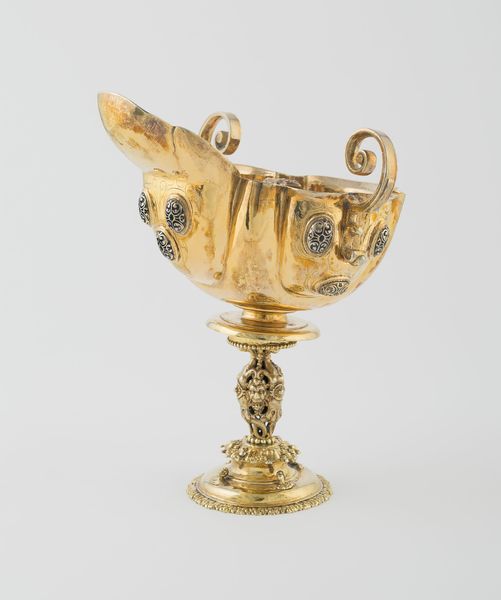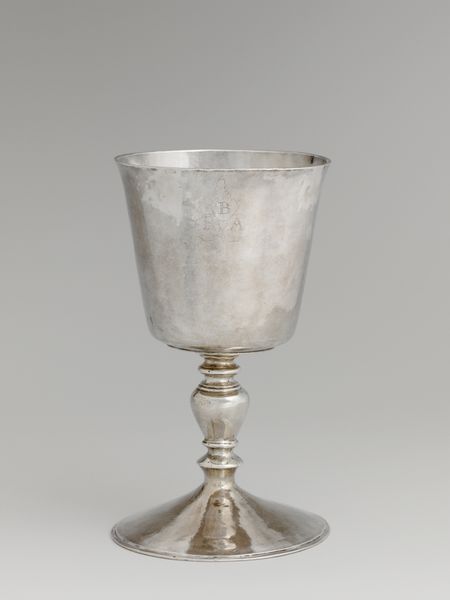
silver, metal, sculpture
#
silver
#
baroque
#
metal
#
sculpture
Dimensions: height 32.4 cm, diameter 18.3 cm
Copyright: Rijks Museum: Open Domain
Jan Anthonie Le Pies crafted this chalice, paten, and spoon, rich in symbols of faith and authority. The cup, adorned with figures and scenes, speaks to sacred narratives and the divine. Note how the cherubic figures at the stem’s base echo those found in Renaissance art. The chalice and paten, central to the Eucharist, bear witness to the enduring power of religious iconography, which transcends cultures and epochs. The cherubs themselves – from ancient pagan cupids to Christian angels – demonstrate a fascinating evolution. They remind us how symbols adapt, carrying echoes of the past into new belief systems. In these figures lies the collective memory of humanity. The emotional resonance of the golden sheen, the delicate figures, and the spiritual symbolism engages viewers, stirring deep subconscious connections to rituals and beliefs. Consider the psychological weight these symbols carry, inviting contemplation and devotion. The chalice, a vessel of transformation, has an endless cyclical progression, resurfacing with new meanings throughout the ages.
Comments
rijksmuseum about 2 years ago
⋮
A chalice is an important object in the Roman Catholic tradition, for in it the wine is changed into the blood of Christ. During Mass, the priest pours the wine into the chalice and places the Host (communion wafer), which stands for Christ’s body, on a paten, a small plate. With the spoon, he then adds water to the wine: according to the Bible, this was the composition of Christ’s blood after his death.
Join the conversation
Join millions of artists and users on Artera today and experience the ultimate creative platform.

